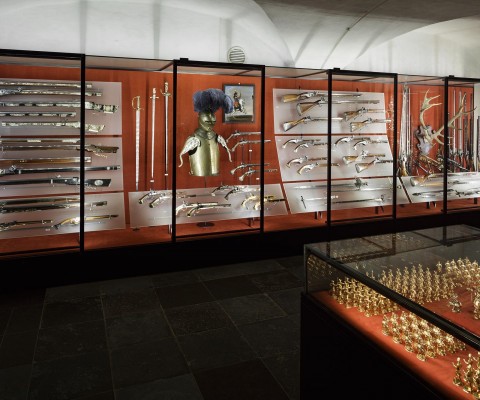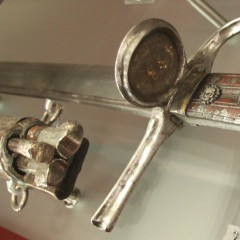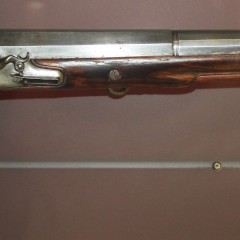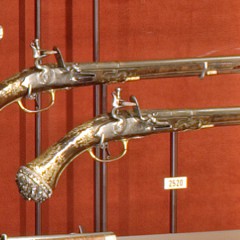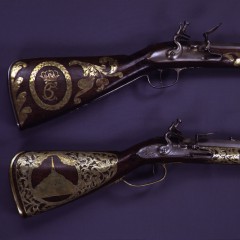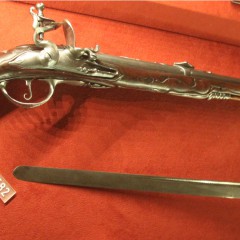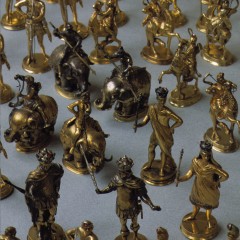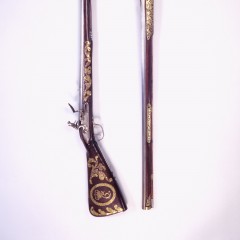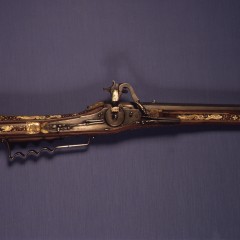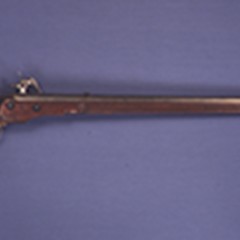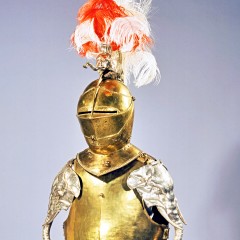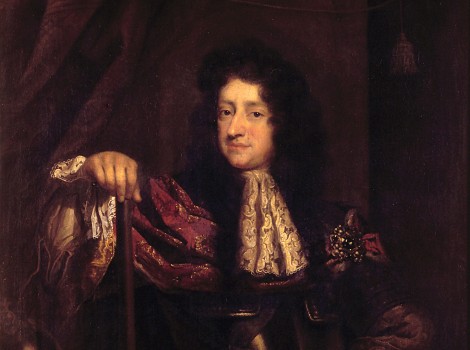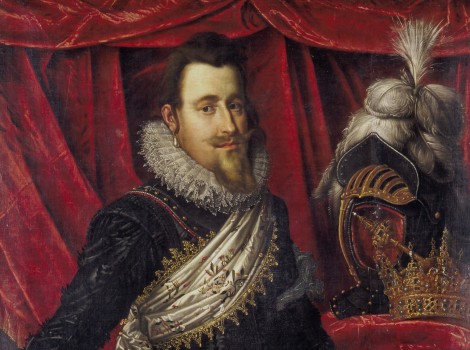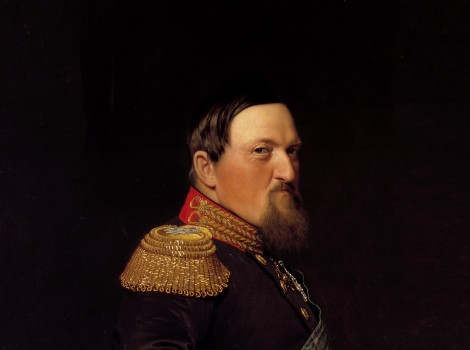B Weapons and wine barrels
Rosenborg’s weapon collection was founded by Frederik III and was kept in two of the uppermost rooms of the Great Tower. Christian V, who had a keen interest in weapons, had the collection enlarged and re-displayed. He took care to ensure that the weapons he had used in the Scanian War of 1675-79 were preserved. In the 18th century most of Rosenborg’s weapons were transferred to Christiansborg, the new residence of the absolute monarchs. There they were destroyed by fire in 1794. What can be seen today is only a fragment of the splendour of the past.
The showcase still contains evidence of the component sections of the collection, however. On the left are the ceremonial weapons. They combined the latest techniques with superb craftsmanship in precious materials and were coveted princely gifts. As a rule the wealth of decorative detail included inscriptions naming both donor and recipient.
Then there are the carousel weapons. Carousel riding became fashionable at the court of Louis XIV in the 1660s and rapidly won international popularity. Carousel riding is a form of tournament in which the aim is to hit diverse objects with various weapons. In this way the prince had the opportunity both to display his equestrian abilities and to make use of splendid weapons and fanciful costumes. Alongside the carousel weapons are the war weapons, several of which were used by Christian V.
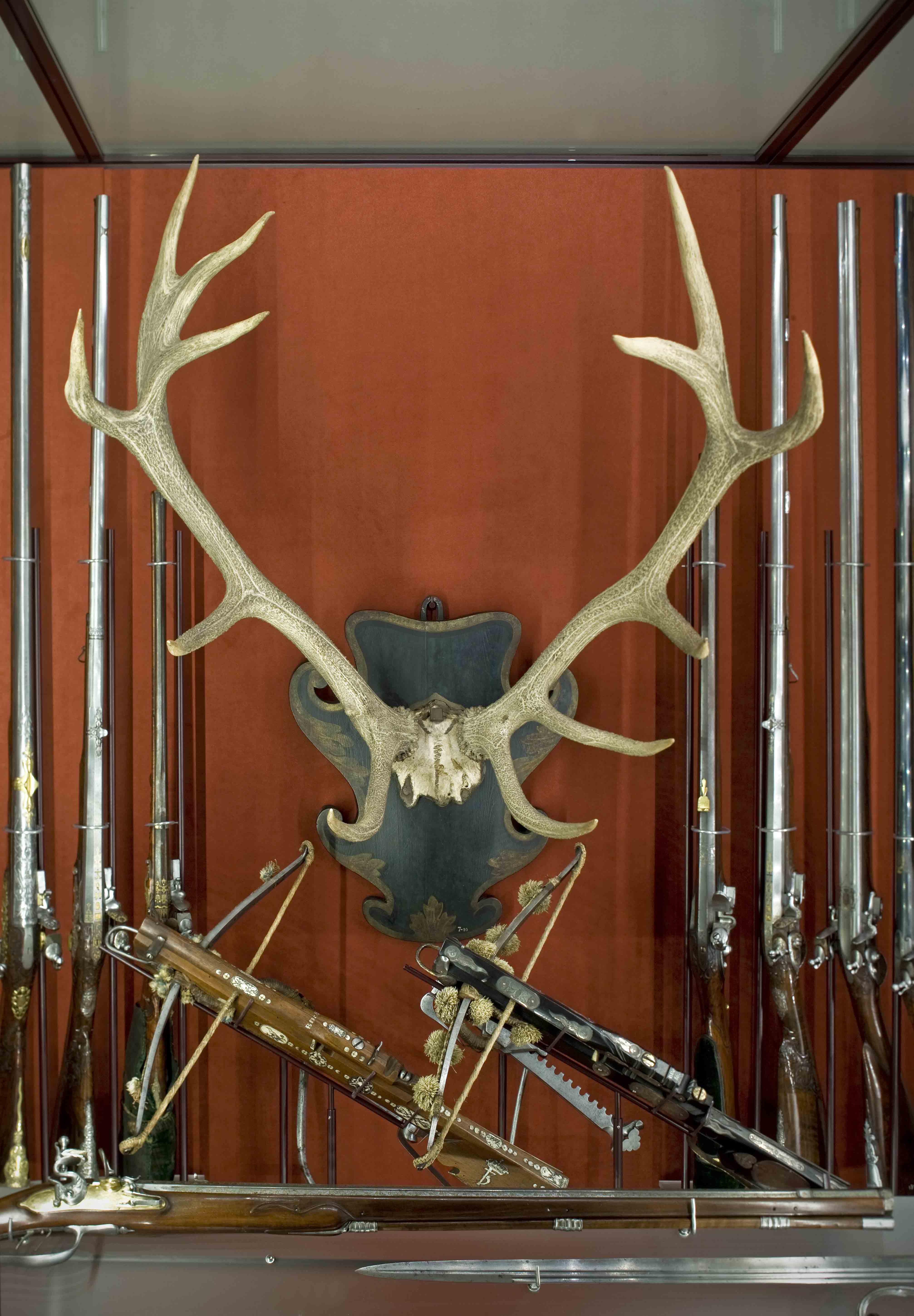
Rosenborg’s weapon collection was founded by Frederik III and was kept in two of the uppermost rooms of the Great Tower. Christian V, who had a keen interest in weapons, had the collection enlarged and re-displayed. He took care to ensure that the weapons he had used in the Scanian War of 1675-79 were preserved. In the 18th century most of Rosenborg’s weapons were transferred to Christiansborg, the new residence of the absolute monarchs. There they were destroyed by fire in 1794. What can be seen today is only a fragment of the splendour of the past.
The showcase still contains evidence of the component sections of the collection, however. On the left are the ceremonial weapons. They combined the latest techniques with superb craftsmanship in precious materials and were coveted princely gifts. As a rule the wealth of decorative detail included inscriptions naming both donor and recipient.
Then there are the carousel weapons. Carousel riding became fashionable at the court of Louis XIV in the 1660s and rapidly won international popularity. Carousel riding is a form of tournament in which the aim is to hit diverse objects with various weapons. In this way the prince had the opportunity both to display his equestrian abilities and to make use of splendid weapons and fanciful costumes. Alongside the carousel weapons are the war weapons, several of which were used by Christian V.

 Dansk
Dansk
 English
English
 Deutsch
Deutsch



